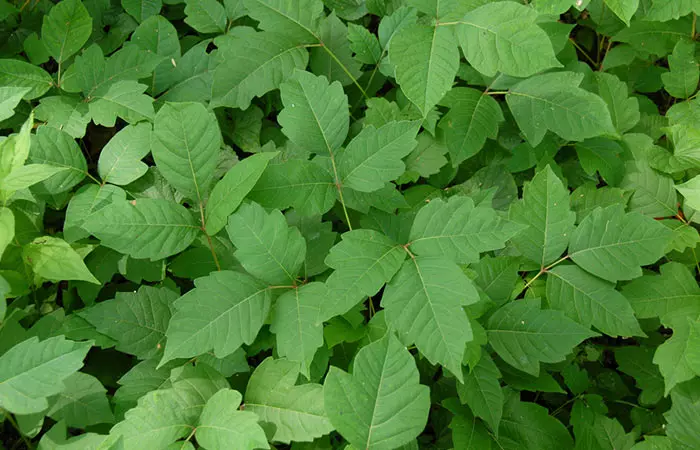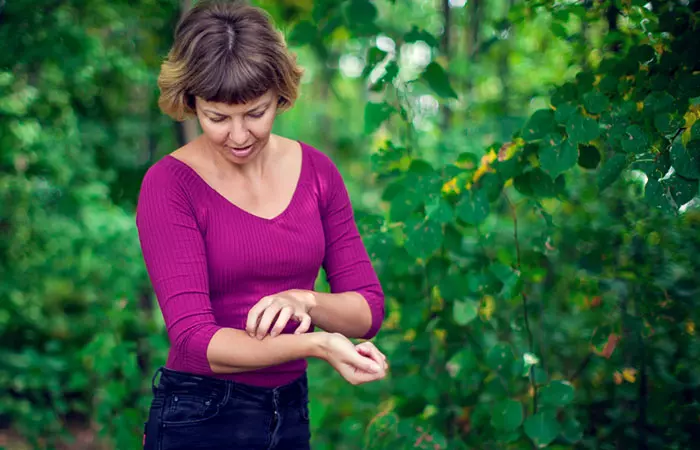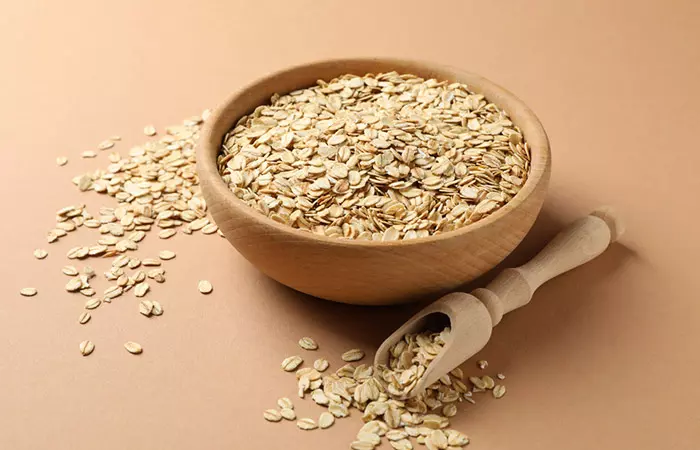What Is A Poison Ivy Rash?
Poison ivy is a climbing plant that secretes an irritant oil from its leaves. Allergic reaction to this irritant oily resin (called urushiol) results in rashes. A rash that results from contact with poison ivy often looks like a straight line because of the way it brushed against your skin. The severity of the rash depends on how much urushiol you have managed to get on your skin. Toxicodendron oil or oleoresin, known as urushiol, causes skin responses in around 50%-75% of the adult population in the United States. A study conducted found that this poisonous plant-induced dermatitis poses an occupational hazard for US military personnel stationed in endemic areas. Over 11 years, 73,725 cases were diagnosed, with higher rates in male, young, non-Hispanic white service members, Army/Marine Corps personnel, and combat-related occupations. Summer months saw the majority of cases, with Fort Benning, Camp Pendleton, Fort Bragg, and Fort Campbell reporting significant diagnoses. The factors that can cause or increase your risk of developing a poison ivy rash are as discussed below.
Causes And Risk Factors Of A Poison Ivy Rash
You can develop a poison ivy rash from the following:
Direct contact with any part of the poison ivy plant Touching objects contaminated with the oily resin from poison ivy Inhaling smoke from burning poison ivy plants
Some outdoor activities that can increase your risk of developing plant allergies like a poison ivy rash are:
Farming Landscaping Forestry Gardening Camping Fishing Hunting
Once your skin is exposed to urushiol, it can result in the following signs and symptoms.
Signs And Symptoms
When your skin comes in contact with poison ivy, it may become:
Red Swollen Blistered Itchy
In addition to this, you may also face difficulty in breathing if you inhale the smoke from burning poison ivy. A poison ivy rash typically progresses through several stages and the symptoms may worsen over time. Find out in the next section.
Poison Ivy Rash Stages
According to the American Academy of Dermatology, a poison ivy rash takes 2-3 weeks to appear if you have never had it before (1). Here are the stages in which it progresses:
Stage 1: You experience intense itching that can wake you from a sound sleep. Stage 2: You develop a red, blistering rash shortly after the itching starts. Stage 3: Once the blisters develop, they eventually break and leak fluid. Stage 4: The blisters crust over after the fluid leaks out.
The rash may clear within 2-3 weeks if you take the proper measures. However, you may experience itchiness till it clears completely. A poison ivy rash can be difficult to get rid of, and it might also spread to other parts of your body if you don’t manage to get its resin off you soon. To prevent it from spreading further and treat the existing rashes, we have come up with a list of the best home remedies, which can be of great help. Read through to know how to get rid of poison ivy rash overnight naturally.
Effective Home Remedies To Treat Poison Ivy Rash
1. Oatmeal Bath
1 cup of powdered oatmeal Bathwater
You must do this at least once daily. Oatmeal possesses antioxidant and anti-inflammatory properties that can help in relieving the itching and inflammation associated with a poison ivy rash almost instantly (2), (3).
2. Baking Soda
2 teaspoons of baking soda 2 glasses of water Sterile gauze pads
Do this 3 to 4 times daily for a few days. Baking soda is alkaline and has pH neutralizing properties . It helps restore the pH of your blistered skin and promotes healing of the rashes. The antibacterial properties of baking soda protect the rashes from further infection (4). This remedy can come in handy if you are also looking for home remedies for skin itching caused by poison ivy rash.
3. Apple Cider Vinegar
2 tablespoons of apple cider vinegar 1-2 glasses of water Sterile gauze pads
You can do this 2 to 3 times daily. Given its acidic, anti-inflammatory, and antimicrobial properties, ACV is one of the best options for treating a poison ivy rash (5).
4. Bleach
1/4 cup of household bleach Bathwater
You must do this as soon as you come in contact with poison ivy for best results. Bleach contains chlorine, a natural disinfectant that tends to dry out your skin. The disinfecting and drying properties of bleach can soothe the itch and speed up the healing of the poison ivy rash (6). If you have sensitive skin, avoid this remedy as it might cause a burning sensation.
5. Jewelweed
Crushed jewelweed plant You must do this twice daily for a few days. Jewelweed is popularly known as the touch-me-not plant. It contains saponins that help in drying the liquid-filled blisters and soothe the itching and inflammation (7), (8).
6. Banana Peel
1 banana peel You can repeat this remedy 2 to 3 times in a day. Banana peels are quite popular for their antimicrobial and anti-inflammatory properties. They help in soothing the itching and inflammation that accompany a poison ivy rash and protect your skin from further infection (9).
7. Toothpaste
Toothpaste (as required) You must do this 2 to 3 times daily until there are no traces of the rash. Toothpastes (especially the mint-flavored ones) exhibit exceptional soothing and cooling properties. The glycerin in the toothpaste helps in drying up the rash and speeds up its healing (9). It also reduces inflammation and redness.
8. Essential Oils
a. Tea Tree Oil
2-3 drops of tea tree oil 1 tablespoon of any carrier oil (coconut or olive oil)
You must do this at least once daily for a few days. Tea tree oil reduces inflammation and prevents infection in the affected areas due to its anti-inflammatory and antimicrobial properties (10), (11). It also eliminates pain, if any, and promotes faster healing of the rashes.
b. Peppermint Oil
3-4 drops of peppermint oil 1 tablespoon of any carrier oil (coconut or jojoba oil)
Do this twice daily for a week or two. Peppermint oil is one of the best essential oils for treating a poison ivy rash. It contains antioxidants and an active compound called menthol, both of which help in soothing the rash (12).
9. Coconut Oil
Coconut oil (as required) You must apply coconut oil 2 to 3 times daily for a few days. The anti-inflammatory, analgesic, and antifungal properties of coconut oil soothe and relieve the itching and the pain and also speed up your recovery (13), (14), (15).
10. Epsom Salt
1 cup of Epsom salt Water
You must do this once daily for a week or two. Epsom salt contains magnesium, which imparts anti-inflammatory properties to it (16). This magnesium is absorbed by the skin, which reduces inflammation and promotes healing (17).
11. Aloe Vera
Aloe vera gel (as required) Apply aloe gel multiple times a day for a few days. Aloe vera contains active compounds that have healing, soothing, antifungal, and anti-inflammatory properties, which can treat a poison ivy rash (18), (19), (20). Since it is popular among the most used home remedies for allergies, it may also help reduce redness and soothe the skin.
12. Lemon Juice
1 teaspoon of lemon juice 1 tablespoon of any carrier oil (coconut or olive oil)
You can do this once every alternate day for a week or two. The acidic nature of lemon juice can help neutralize the pH of your blistered skin, thereby helping it to dry faster. Lemon is also a rich source of vitamin C, which has anti-inflammatory properties and can help in reducing the itching, inflammation, and swelling (21).
13. Neem Oil
1 teaspoon of neem oil Any carrier oil (optional)
You must do this 1 to 2 times daily for a week. Neem oil is another option that you can consider for getting rid of a poison ivy rash at the earliest. Its anti-inflammatory properties help in relieving itching, irritation, inflammation, and redness (22). Neem oil also possesses antiseptic properties that protect the rash from infection. Janine Bandcroft, a blogger, discusses recurring bouts of poison oak rash, possibly linked to childhood exposures. She discussed how treating poison oak bouts with natural remedies helped her the best. She writes, “If you suspect they might be, or if you just want to be sure they aren’t, make a paste of slippery elm bark and cover the affected area. Let that sit for about 15 minutes and rinse. Slippery elm bark is good for drawing thistles and splinters and thorns out of your body. It also helps ease the itch. (i)”. She also shares a few more remedies such as avoiding heat, drinking chamomile tea to manage inflammation, and soaking in a detoxifying bath. A poison ivy rash usually lasts for two to three weeks. But with proper treatment, it can disappear sooner. You can also take the following precautionary measures to prevent the recurrence of such rashes.
Prevention Tips
Learn to identify poisonous plants and steer clear of them. Wear protective clothing if you are in surroundings that increase your risk of developing a poison ivy rash. Remove or destroy any such plants that you come across. However, do not burn them. Wash your hands, your pet, and any other object that may have come in contact with poison ivy within 30 minutes of exposure to reduce the intensity of the rash. Avoid scratching the area to prevent further irritation and possible infection. Apply a barrier cream whenever there is a risk of coming in contact with poison ivy.
Dr. Anna Chacon, a double board-certified dermatologist and a Fellow of the American Academy of Dermatology, says, “It’s preferable to leave it exposed as much as possible.” Although you can lessen your chance of getting poison ivy by following practical preventative advice, it is important to know when to get medical attention if you get a serious rash. Scroll down to learn more.
When To Seek Medical Help
If you experience severe symptoms including breathing difficulties, face, lip, or throat swelling, or if the rash covers a significant portion of your body, get medical attention. It is also important to see a doctor if you get a high fever, any infection-related symptoms including increased redness, pus, or pain, or if the rash does not go away with over-the-counter remedies. Will hydrogen peroxide dry up poison ivy? Dr. Chacon says, “Hydrogen peroxide can aid in the treatment of poison ivy rash.” Does salt water dry up poison ivy? According to Dr. Anna Chacon, “The sea salt helps to dry up the rash, allowing it to recover faster.” Does sweating make poison ivy worse? Dr. Chacon states that if the resin (urushiol) has been wiped away, perspiration will not spread the rash. How long does it take for a poison ivy rash to go away? The resin from poison ivy can enter your skin within 5 to 10 minutes of contact. However, it may take anywhere between 4 hours to 2 weeks for the rashes to appear. These rashes usually last for a week or two, but in severe cases, they can last for 30 days or longer. Does poison ivy rash spread from person to person? Poison ivy rash isn’t contagious, and the blisters that appear as a result of contact with it do not contain urushiol. Hence, they do not spread from person to person. However, if you come in contact with its oil irritant resin directly or via other objects, you can develop a poison ivy rash. Will hydrogen peroxide dry up poison ivy? Yes, you can use a 3% hydrogen peroxide solution to help dry up your poison ivy rash. However, be cautious, as it may even irritate the rash further. Consult your doctor before using this remedy for treating your poison ivy rash. Is the Dawn dish soap good for poison ivy? Anecdotal evidence suggests that the Dawn detergent soap will help break up urushiol, the oil responsible for the development of poison ivy. You can apply a few drops of the dish soap directly to the skin or wrap a fresh cloth around it and apply it to the affected areas. Why is poison ivy spreading after a week? The poison ivy rash may spread even after a week if the different exposed areas absorb the chemical at different rates. Even repeated exposure of the affected areas to the contaminated objects may cause the rash to spread further. Applying alcohol on an ulcerative rash would slow down the healing process. Watch the video below for some simple steps to treat your poison ivy rash. It also shares tips on soothing the itch and reducing the accompanying inflammation.












